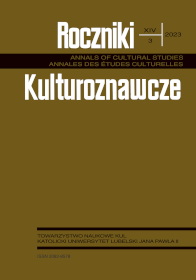Comparing Perceptions: Westerners and Kenyans Facing Swahili Tangible Cultural Heritage. An Inquiry on Gede, Mnarani, and Jumba La Mtwana Ruins
Comparing Perceptions: Westerners and Kenyans Facing Swahili Tangible Cultural Heritage. An Inquiry on Gede, Mnarani, and Jumba La Mtwana Ruins
Author(s): Giuseppe CapriottiSubject(s): Anthropology, Social Sciences, Cultural Anthropology / Ethnology, Culture and social structure
Published by: Towarzystwo Naukowe KUL & Katolicki Uniwersytet Lubelski Jana Pawła II
Keywords: cultural heritage; Swahili ruins; value; perception; guidebooks; curatorship
Summary/Abstract: The tangible heritage of the Kenyan coastal area between Malindi and Mombasa is mainly represented by ruins of urban settlements that date between the 10th and 18th centuries and are central to the formation of the Swahili culture. Very often, these archaeological sites feature contemporary snake parks, with reptiles displayed in Perspex boxes. As a result of suggestions in European and American guidebooks that strongly recommend visits as unforgettable, these sites are mostly visited by foreign tourists. The aim of this paper is to analyse the perception of value of these coastal ruins, to understand how the current inhabitants approach the Swahili past, and with a focus on the relationship between identity and tangible culture. The first sources for this research are tourist guidebooks: how are the ruins presented in the international guides for tourists and in local guides for Kenyan citizens? What differences can we notice? In addition, during a long stay on the coast, we carried out a survey using a questionnaire as a supplementary tool to better understand the perception of the value of ruins among the local communities. The provisional outcomes show that only a small number of local inhabitants have visited the ruins and that, in general, they are not perceived as a fundamental trait of coastal identity. Why do the Mijikenda, the traditional inhabitants of this area, weakly identify themselves with the cultural/historical heritage of the stone towns? Are local societies fostering new connections with ruins and monuments that are present in the territories they inhabit? Is tangible cultural heritage used to support new interpretations of the past?
Journal: Roczniki Kulturoznawcze
- Issue Year: 14/2023
- Issue No: 3
- Page Range: 21-34
- Page Count: 14
- Language: English

